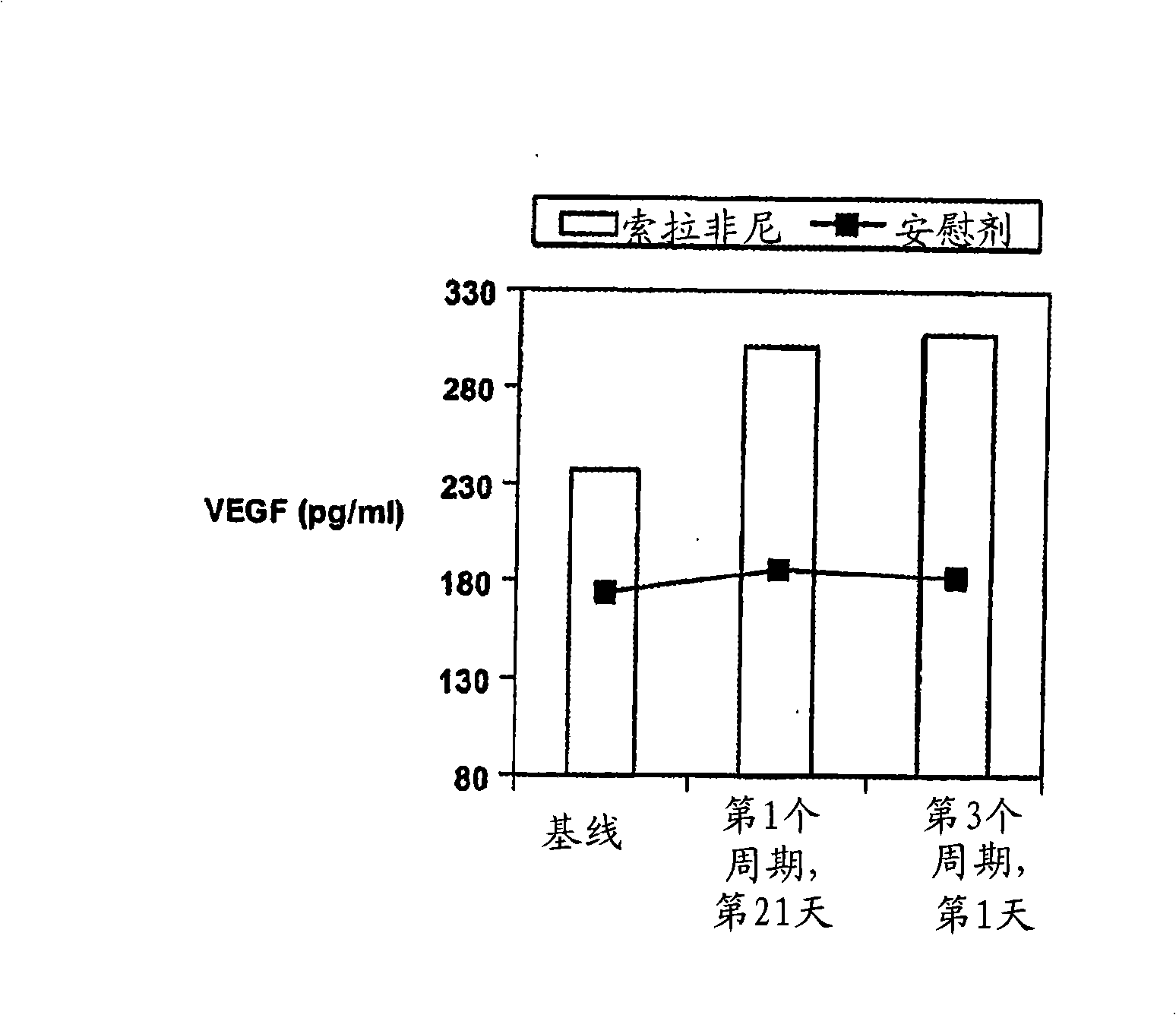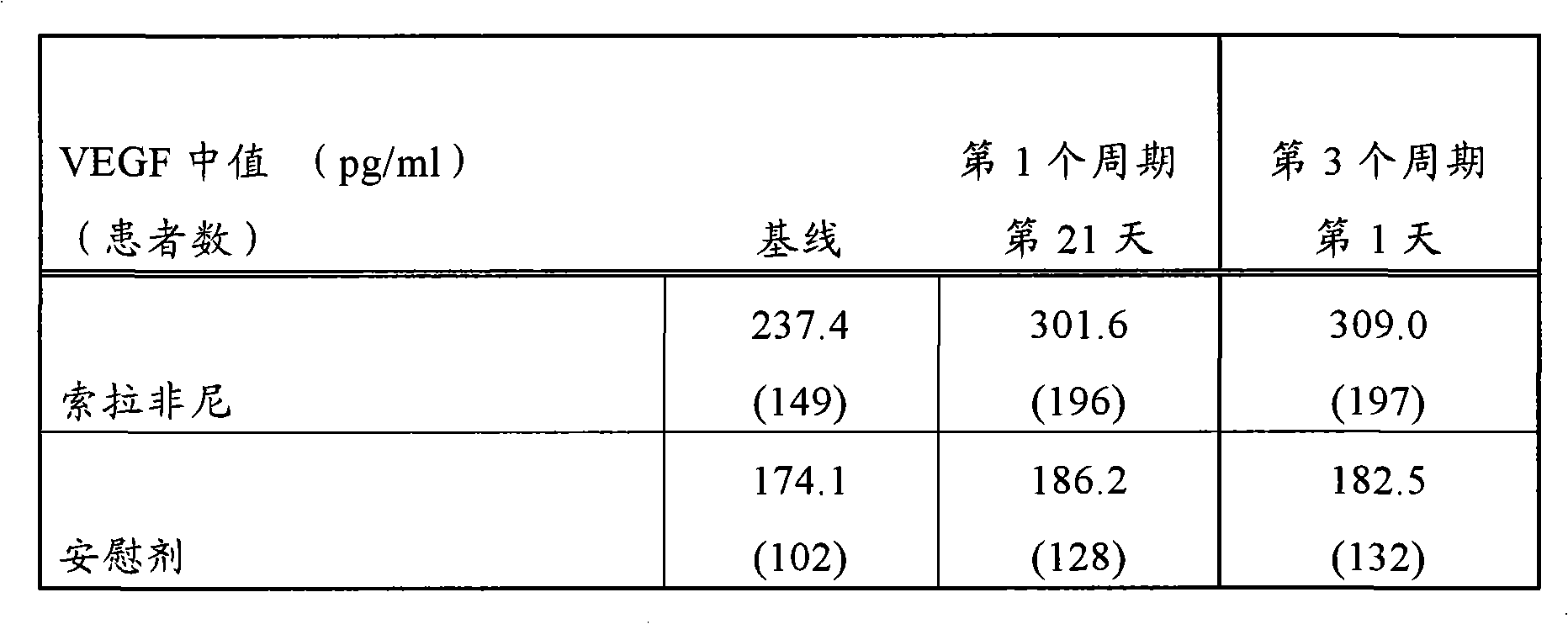Methods for prediction and prognosis of cancer, and monitoring cancer therapy
A prognostic and immune detection technology, applied in the direction of measuring devices, antineoplastic drugs, instruments, etc., can solve the problem of no correlation between reports
- Summary
- Abstract
- Description
- Claims
- Application Information
AI Technical Summary
Problems solved by technology
Method used
Image
Examples
Embodiment 1
[0087] Example 1. Solid Phase Sandwich Microtiter ELISA for Human Serum and Plasma Sample Preparation
[0088] Suitable samples for analysis by VEGF ELISA include human plasma treated with heparin, citrate or EDTA. Special care is required in the preparation and assay of human serum and plasma due to possible interfering factors. Any flocculant material should be removed from the sample by microcentrifugation prior to dilution. The initial concentration of the serum or plasma sample to be examined should be 12-13% (1:8 dilution of sample in sample diluent). For example, 40 μl of sample is diluted in 280 μl of sample diluent and 100 μl is added to a microplate well.
[0089] test methods
[0090] The following ELISA protocol was used in a sandwich ELISA (Oncogene Science, Cambridge, MA) to measure human VEGF in human plasma and serum.
[0091] 1. Prepare the working solution (1X) for plate washing (supplied as part of the assay kit).
[0092] 2. For each sample and standar...
Embodiment 2
[0109] Example 2. Plasma from Renal Cell Carcinoma Patients
[0110] Duplicate samples were used to measure VEGF levels using a VEGF ELISA (R&D Systems, Minneapolis, MN) according to the manufacturer's directions. For each patient, the mean of duplicate measurements was determined. For the patient group treated with sorafenib and the patient group treated with placebo, the mean levels of VEGF at three time points are given in Table 1, the three time points are baseline (pre-treatment), cycle 1 Day 21 and Day 1 of cycle 3. figure 1The same data are shown in . The results showed that the Sorafenib-treated patient group had significantly reduced VEGF levels from baseline at two time points (using paired t test, p 0.05).
[0111] Table 1: VEGF
[0112]
PUM
 Login to View More
Login to View More Abstract
Description
Claims
Application Information
 Login to View More
Login to View More - R&D
- Intellectual Property
- Life Sciences
- Materials
- Tech Scout
- Unparalleled Data Quality
- Higher Quality Content
- 60% Fewer Hallucinations
Browse by: Latest US Patents, China's latest patents, Technical Efficacy Thesaurus, Application Domain, Technology Topic, Popular Technical Reports.
© 2025 PatSnap. All rights reserved.Legal|Privacy policy|Modern Slavery Act Transparency Statement|Sitemap|About US| Contact US: help@patsnap.com


